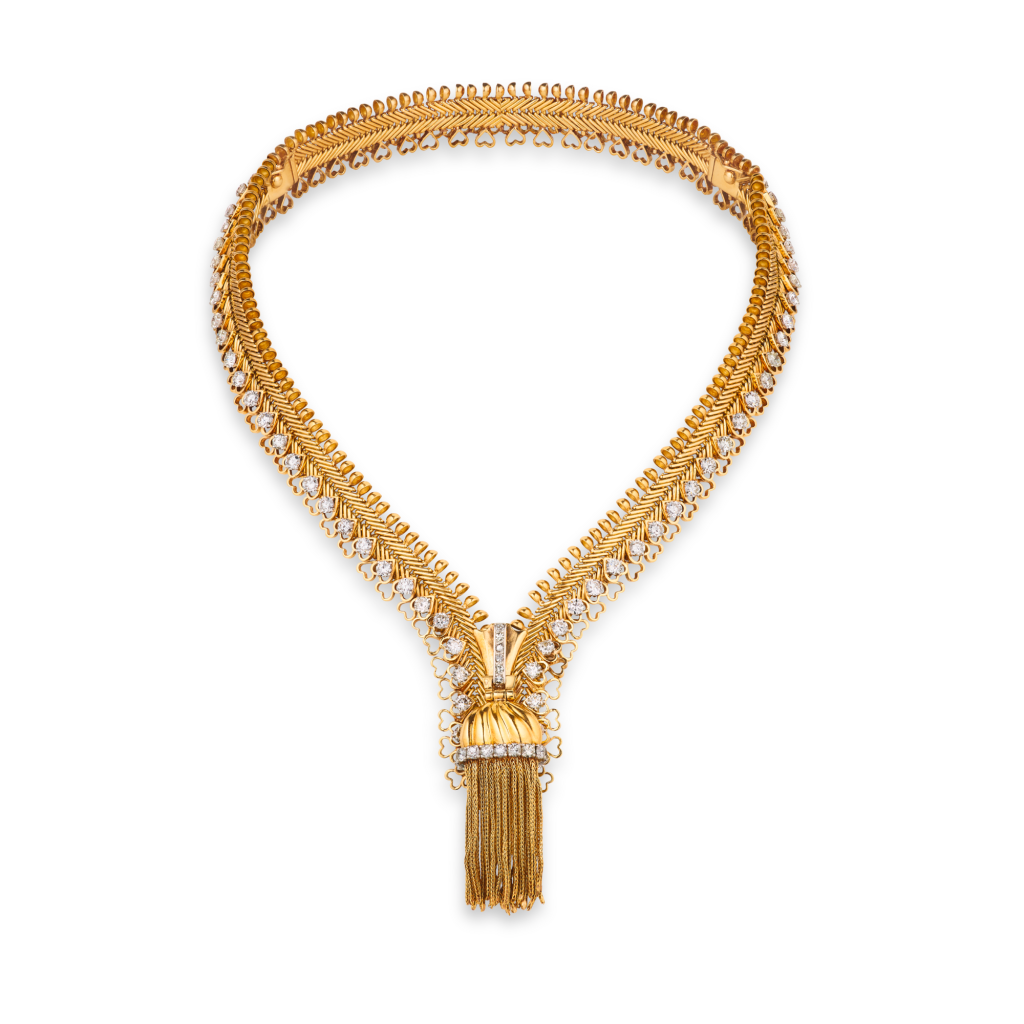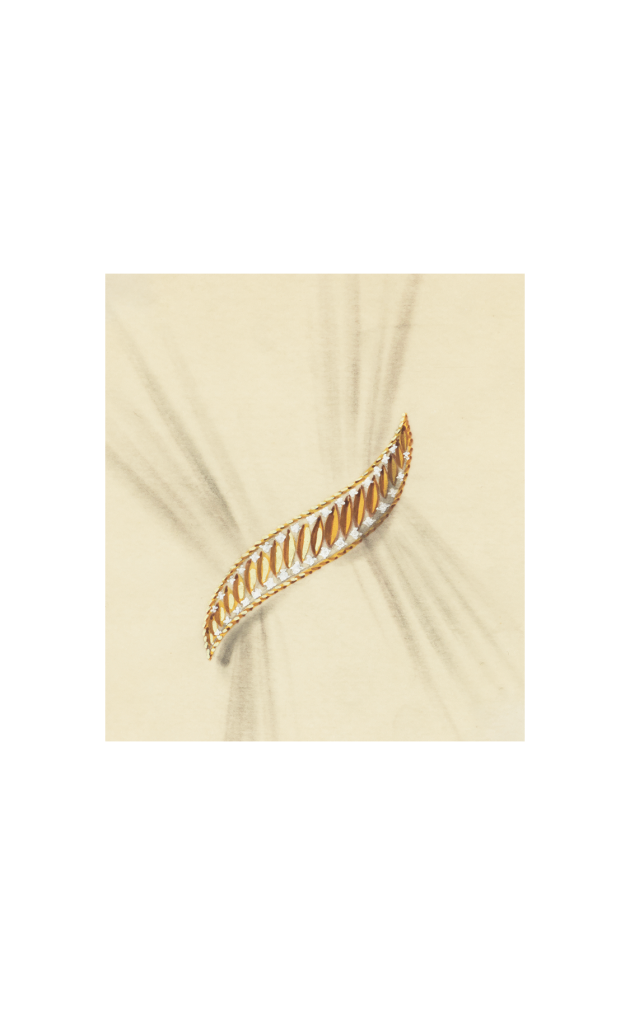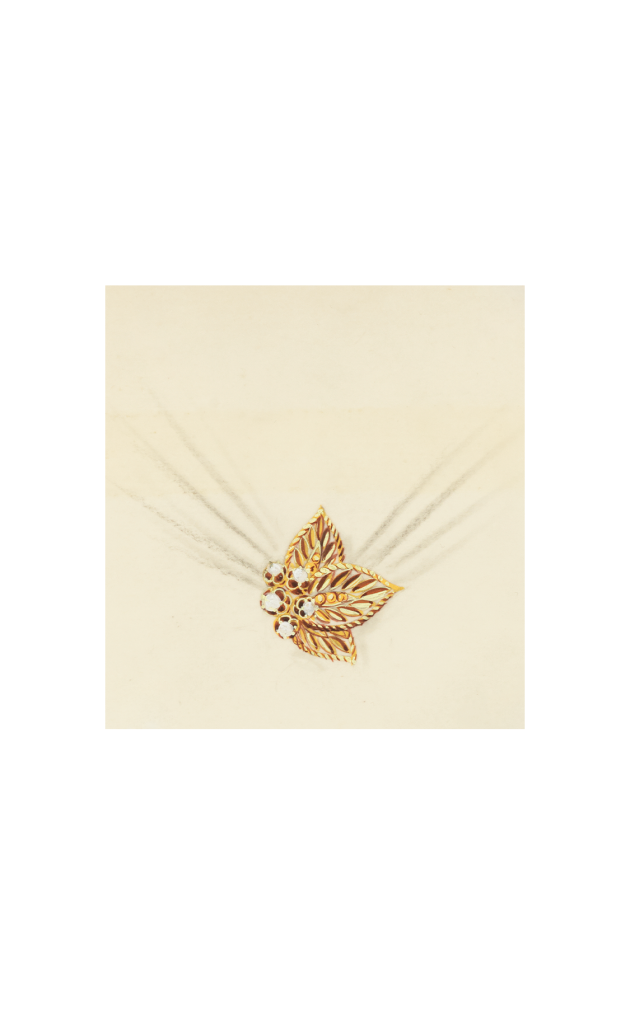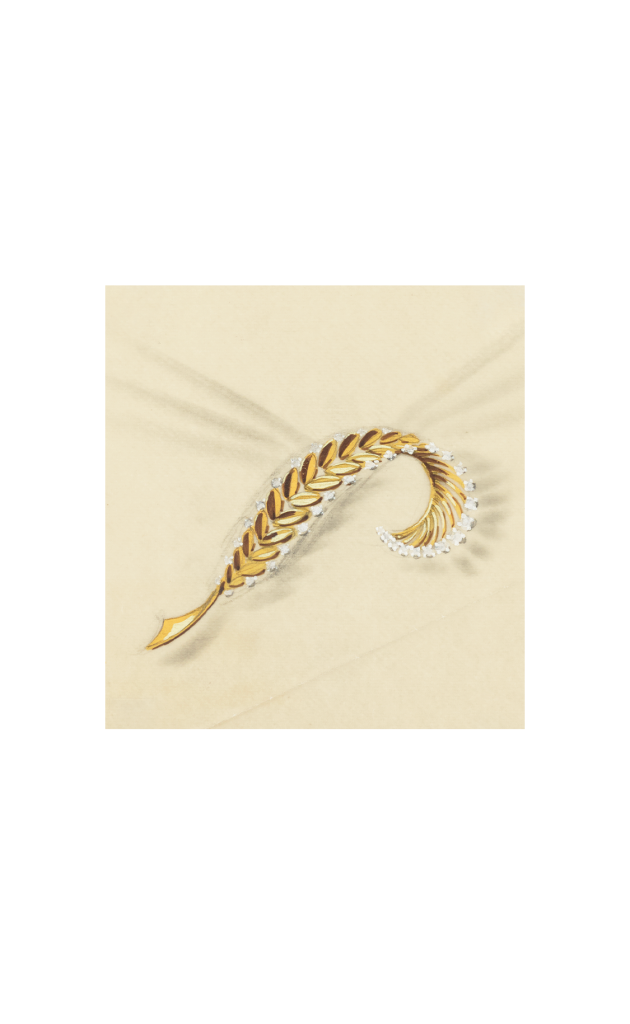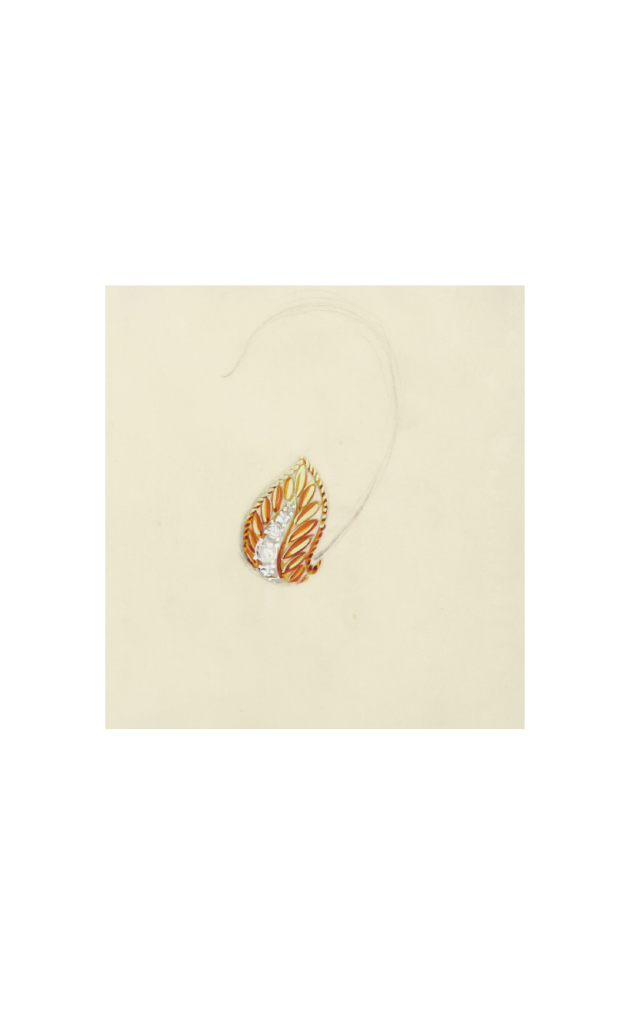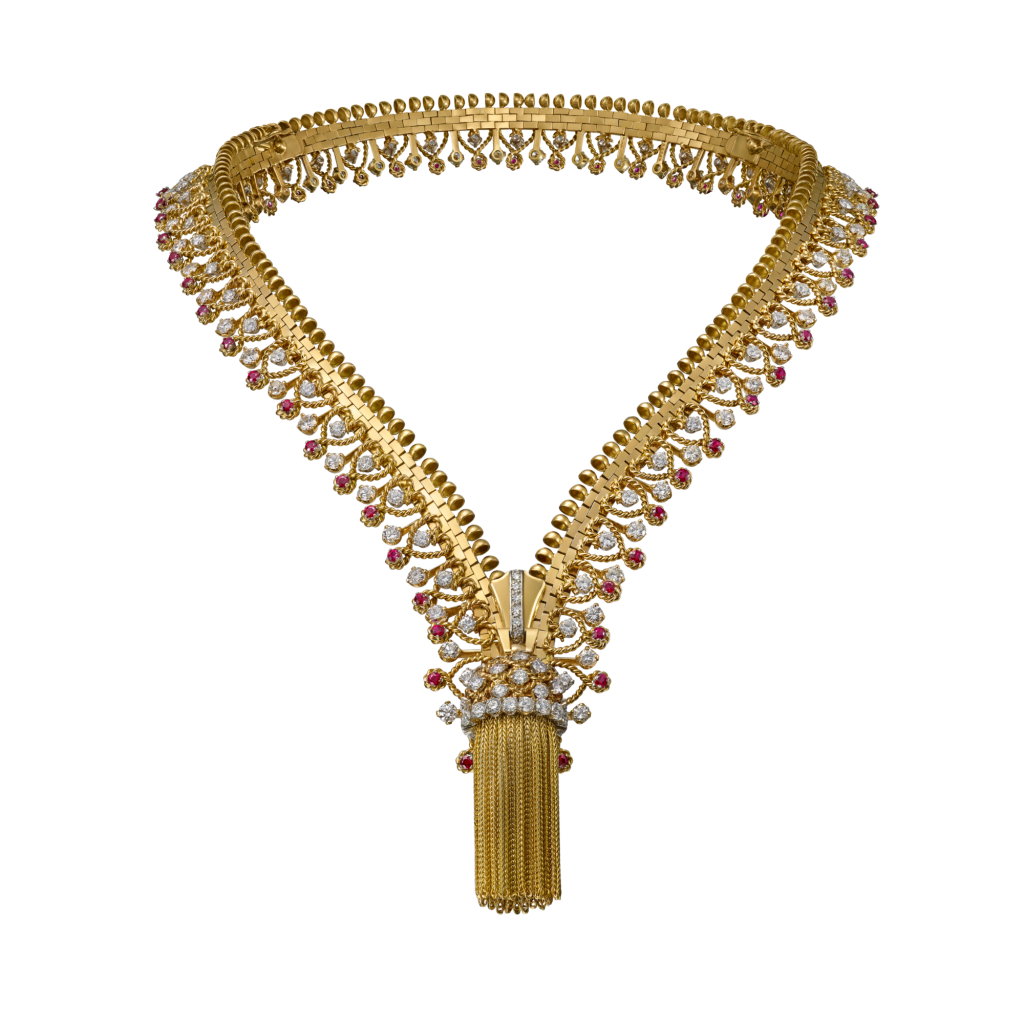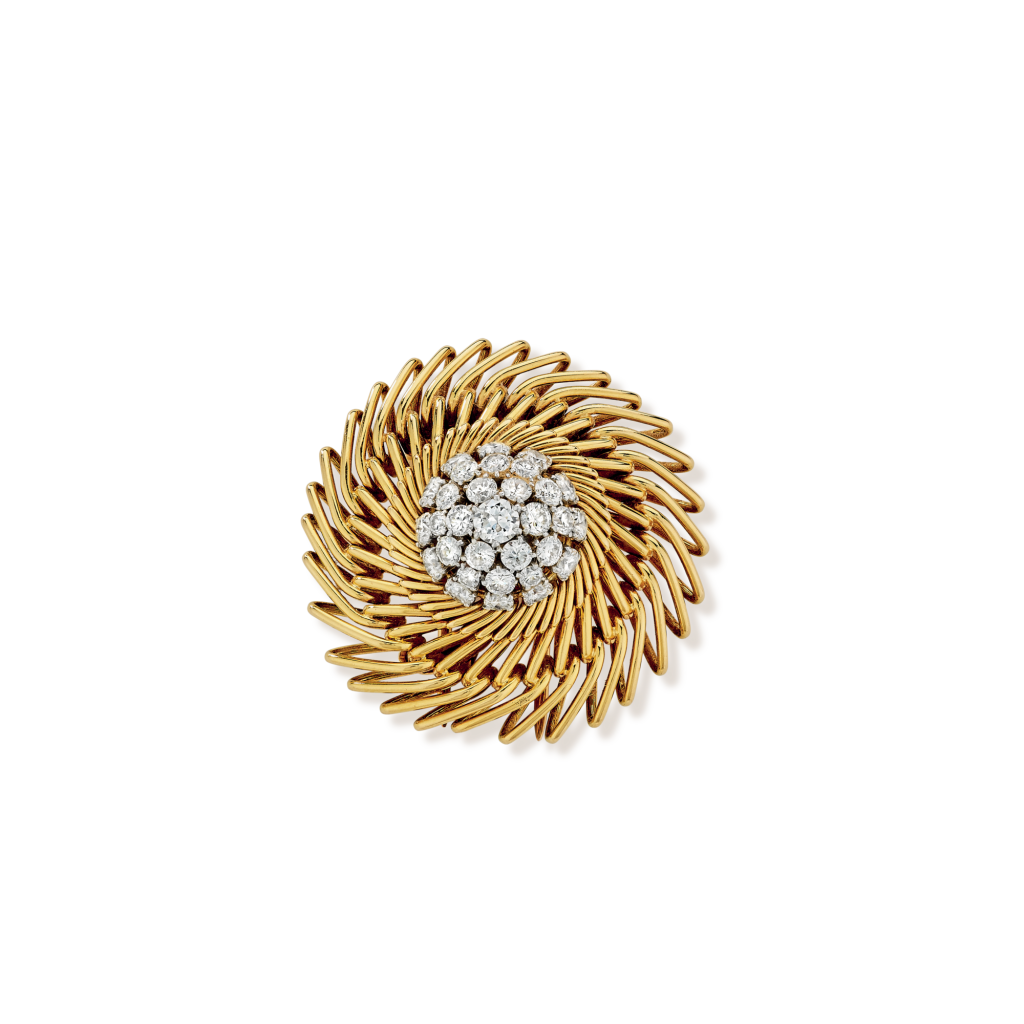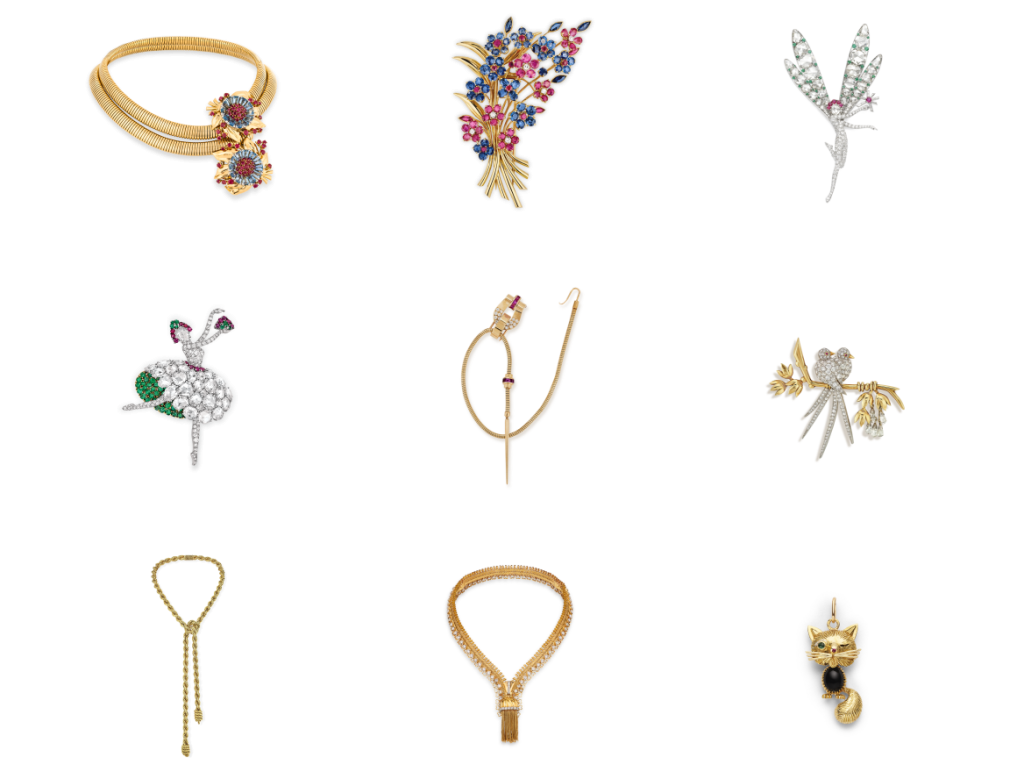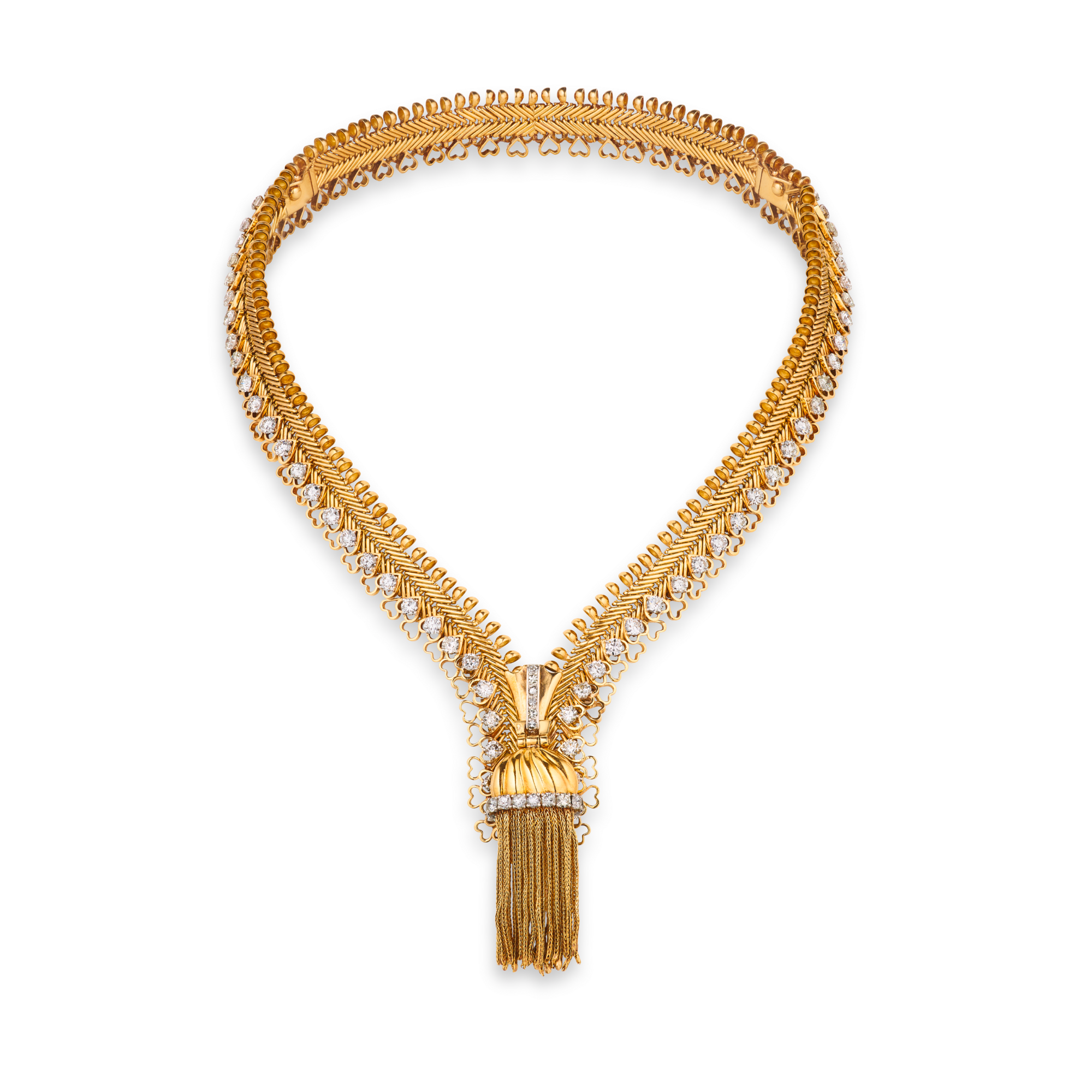
Zip necklace
Creation details
- Creation year 1951
- Usage Necklace
- Dimensions 220 mm
The Zip necklace, invented in 1950, was an amazing technical feat and a creative paragon for Maison Van Cleef & Arpels. The principle of the zipper, invented in the United States in the mid-nine- teenth century and mainly intended for functional purposes within the textile industry, was transformed here into a precious piece of jewelry.
The yellow gold teeth of the zipper are edged with a mesh similar to serge fabric. This, in turn, is bordered with a row of brilliant-cut diamonds and polylobed motifs. The slider, itself set with brilliants, ends in a gadrooned, yellow gold tassel edged with diamonds, completed with small, flexible metal chains. It slides open to form a necklace or, when the back section is removed, a bracelet.
The introduction of the Fermeture Éclair® in fashion and jewelry
The earliest use of a zipper in jewelry was seen in the Maison’s 1938 production. That year, Elsa Schiaparelli dared to fit her evening dresses with Fermetures Éclair®1Anonymous, “Trois grands drapés,” Femina (January 1938): 63. (lit. ‘lightning closures,’i.e. zippers) and Van Cleef & Arpels registered a patent for a “fermeture rapide ornementée” (“ornamental fast-closing zip”).
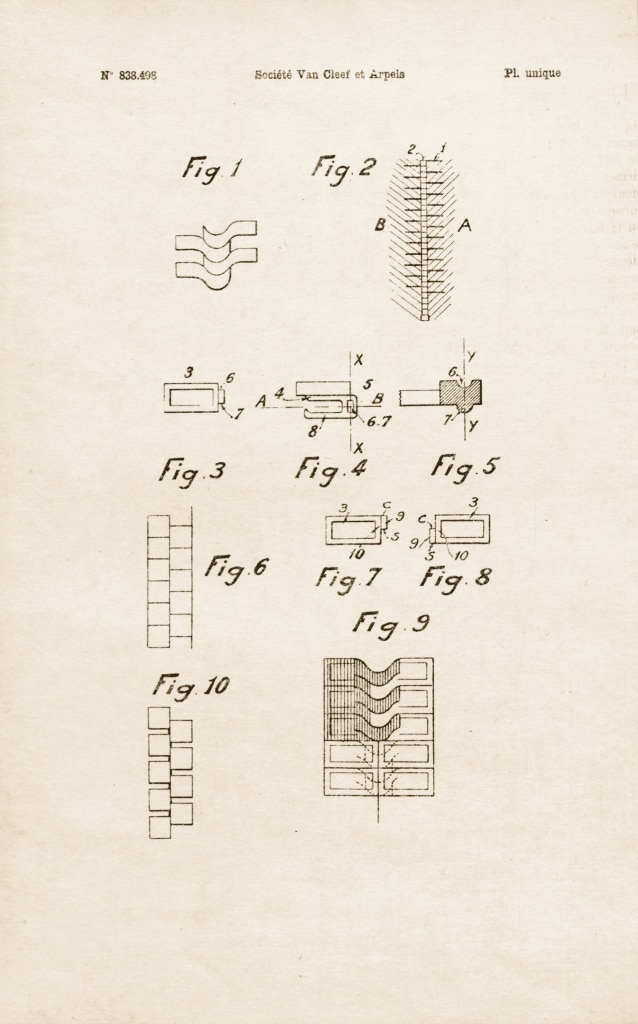
This invention was implemented the very same year in a piece made of platinum and baguette- cut diamonds. The ornament chosen for this first Fermeture Éclair was a ribbon pave-set with brilliants tied around the slider. Another model was produced for “modestly”2Anonymous, “Échos des demi-collections. Une petite robe de 130 000 francs,” Le Figaro (May 30, 1939): 8. doing up an afternoon dress designed by the couturier Robert Piguet.
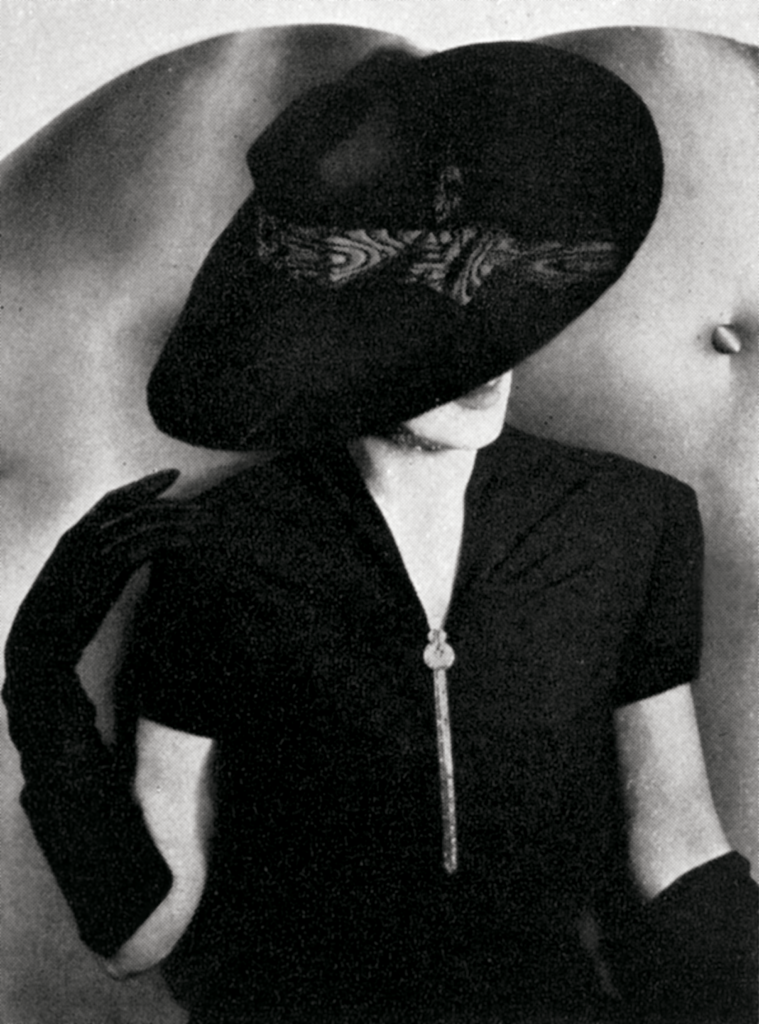
It was not until 1951, however, that a second patent was registered,3Patent registration Brevet for a “Bijou à transformation et fermeture à curseur pour ce bijou et toutes autres applications,” no 1042.343, filed by A. Pery & Cies on September 20, 1951. Paris, Archives de l’INPI. perfecting the first invention in order to create a necklace, which could, in turn, be transformed into a bracelet by a “system of detachable strips.” This new version of the Zip, tested in 1950, was accompanied by clips produced in October 1951, and then earrings the following month, to form a complete set.
Chromatic and technical variations
Many variations of the Zip necklace were produced, differing both in the materials used and in their ornamental motif. While the 1938 version of the Fermeture Éclair was made of platinum and diamonds, most of the necklaces produced after 1950 were made of yellow gold set with diamonds and rubies. Just one example, produced in 1952, harked back to the earlier Zip version, composed of platinum, osmior, and diamonds.
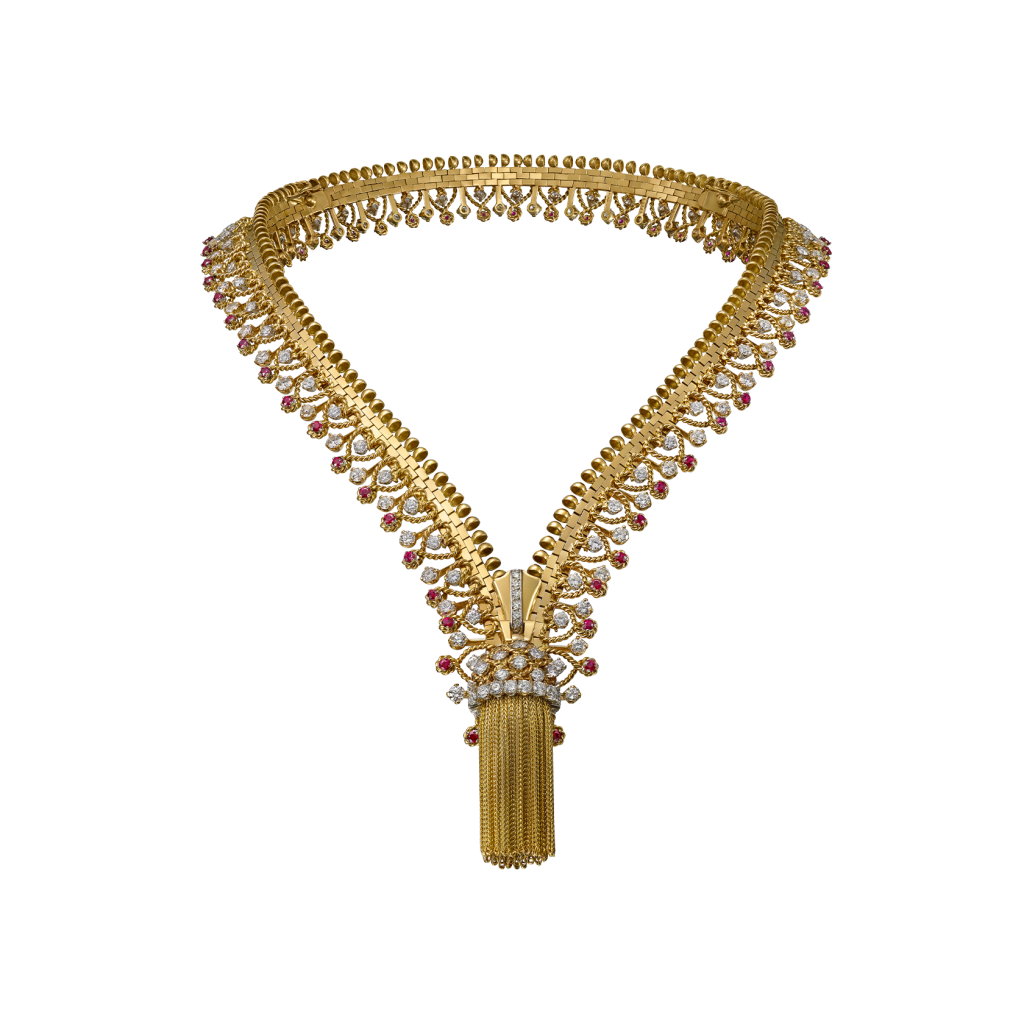
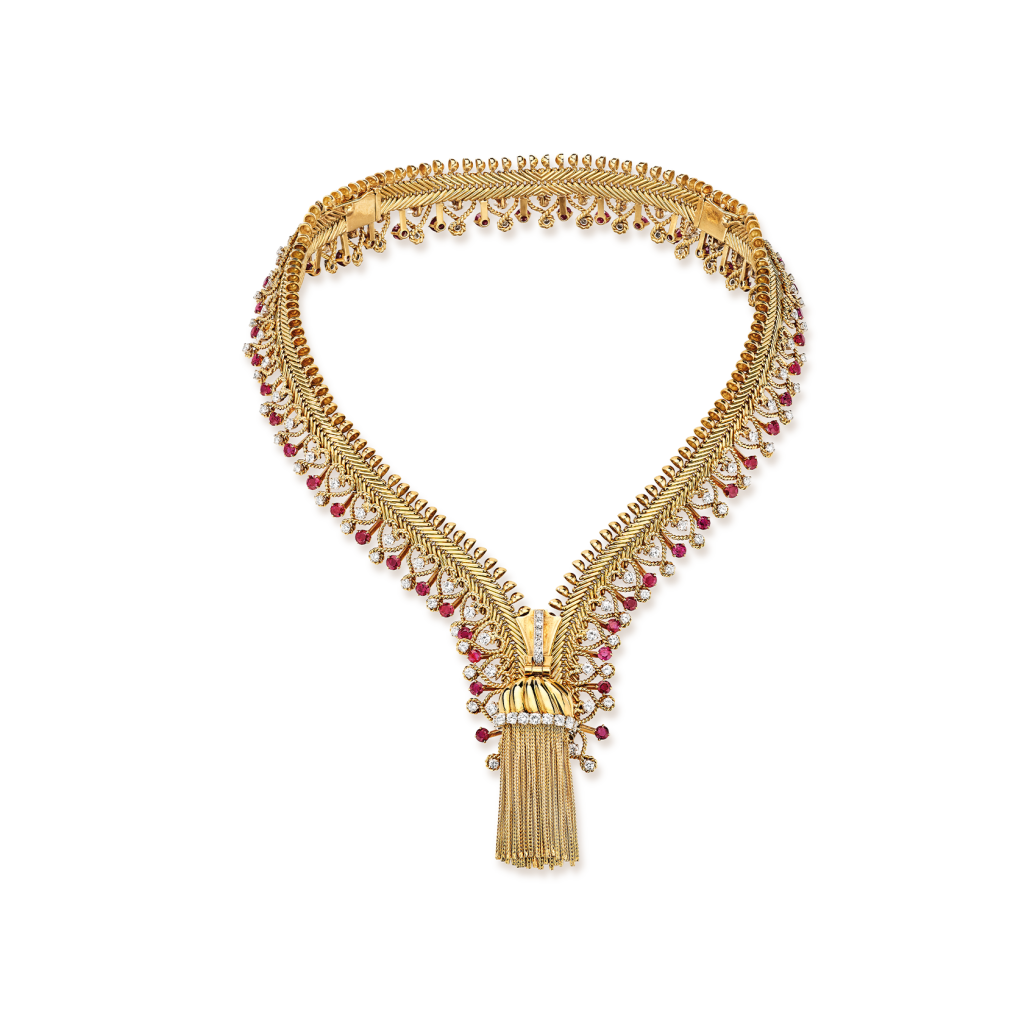
The early pieces were adorned with a mesh reproducing a serge fabric, in keeping with the experimental work on the use of yellow gold for imitating different fabrics, undertaken by Van Cleef & Arpels since the 1940s.
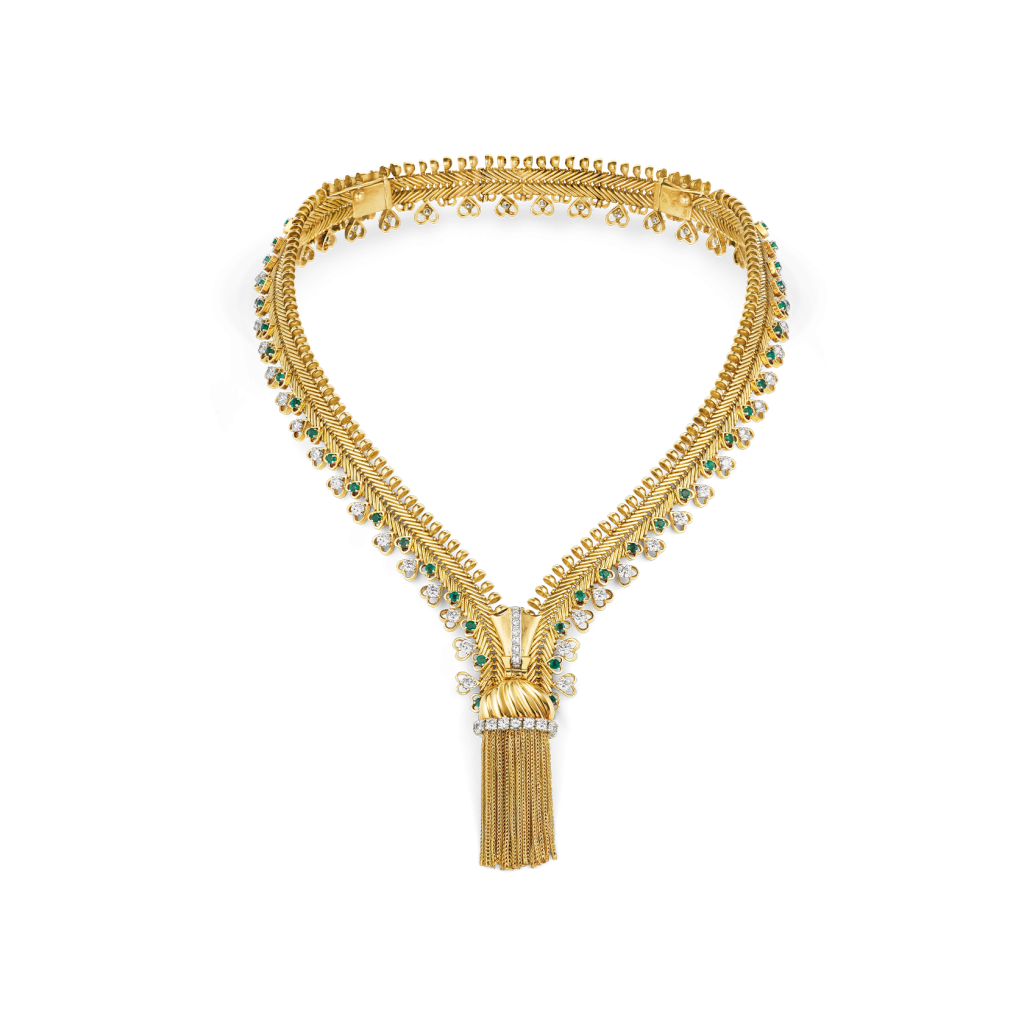
From September 1951, the Maison applied another mesh to the Zip the so-called “briquette fabric,” used for the Ludo bracelets since 1934. Variations were made to the ornamentation bordering the zipper, playing with the number of lobes of twisted yellow gold and their arrangement. Polychrome compositions were occasionally seen, with sapphires and emeralds completing the usual diamond and ruby duo.
The Zip necklace, in its various manifestations, drew upon the Maison’s creative repertoire, from the navette motifs from the Chantilly pieces to the colors chosen to represent the Normandy and Picardy regions, which were used to adorn the “crown” of the slider with a paved setting of assorted gems. The Zip necklace was produced for ten years, later reproduced in the 1990s, and still remains a source of innovation for the Maison’s workshops.
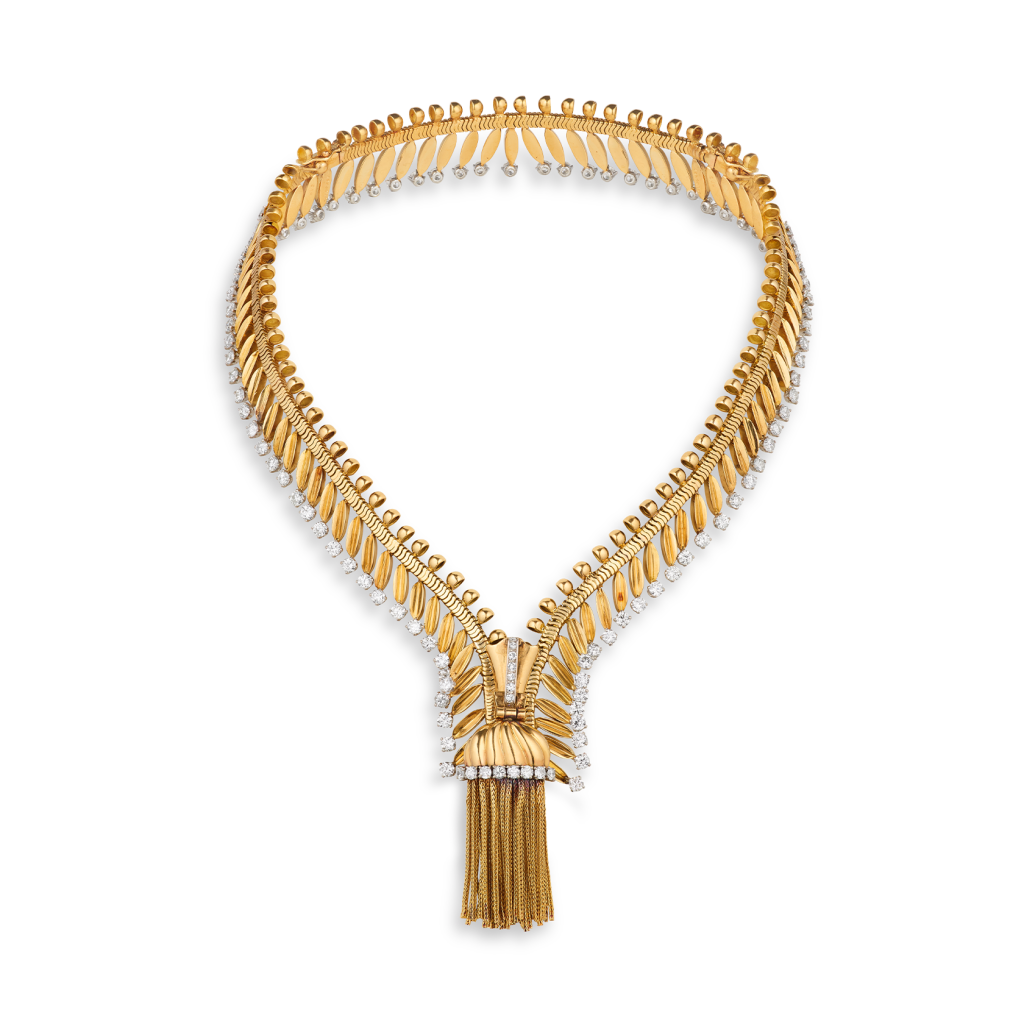
DRAWINGS OF CHANTILLY JEWELRY
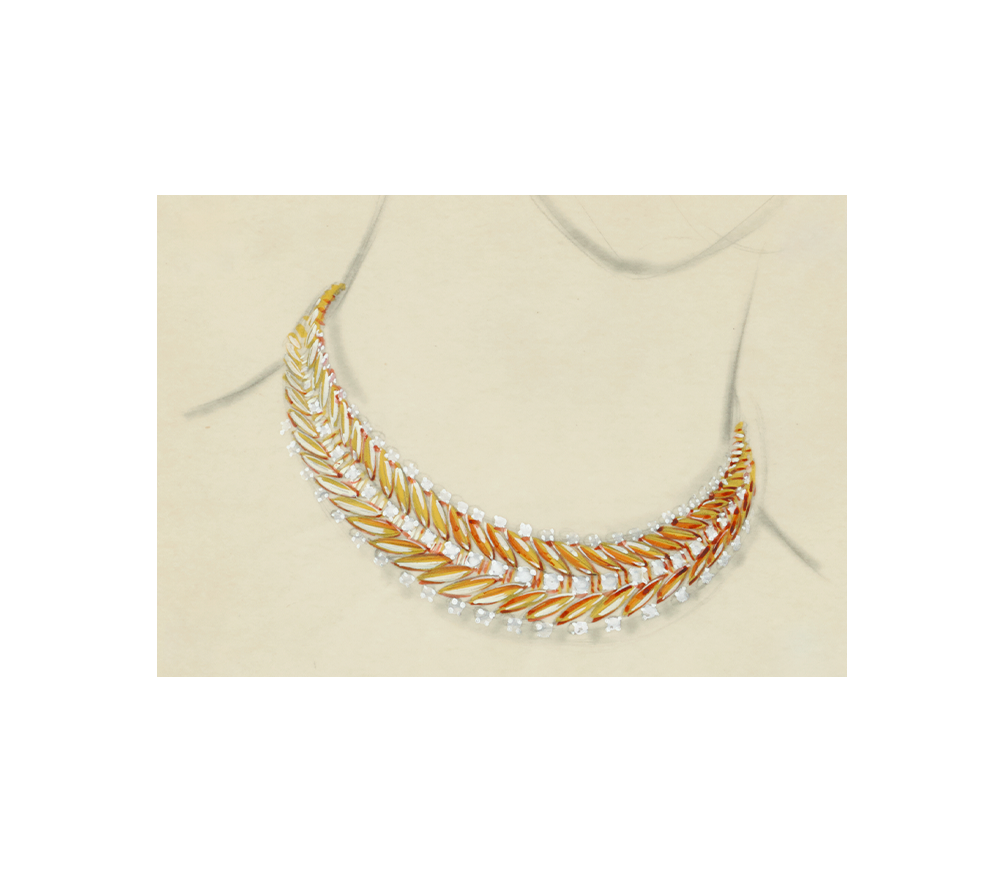
To go deeper
